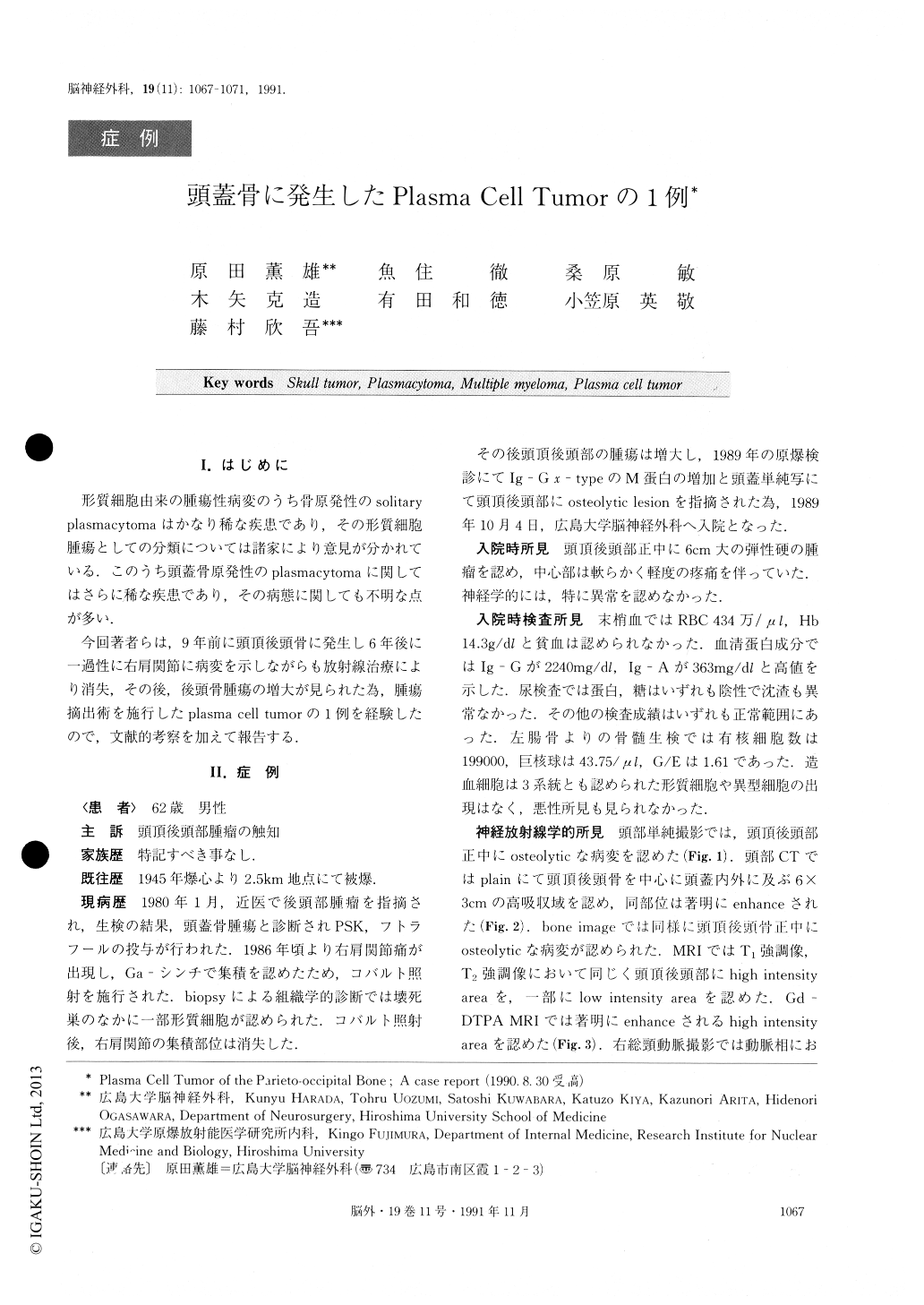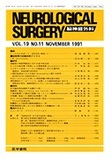Japanese
English
- 有料閲覧
- Abstract 文献概要
- 1ページ目 Look Inside
I.はじめに
形質細胞由来の腫瘍性病変のうち骨原発性のsolitaryplasmacytomaはかなり稀な疾患であり,その形質細胞腫瘍としての分類については諸家により意見が分かれている.このうち頭蓋骨原発性のplasmacytomaに関してはさらに稀な疾患であり,その病態に関しても不明な点が多い.
今回著者らは,9年前に頭頂後頭骨に発生し6年後に一過性に右肩関節に病変を示しながらも放射線治療により消失,その後,後頭骨腫瘍の増大が見られた為,腫瘍摘出術を施行したplasma cell tumorの1例を経験したので,文献的考察を加えて報告する.
Abstract
Plasmacytoma originating in the cranial bone is a rare disease. A report is presented of a case of plas-macytoma originating in the parieto-occipital region.
The patient was a 62-year-old male with palpation ofa parieto-occipital mass as chief complaint. He showed no neurological deficit. Ig-G in the serum was 2240 mg/dl, and M-protein (n-type) was demonstrated in the serum. Bence-Jones protein was negative and bone marrow was normal. Skull X-ray showed osteolytic change in the parieto-occipital region. CT scan and MRI demonstrated a markedly enhanced mass extend-ing from the epidural to the subcutaneous space at the parieto-occipital region. Common carotid angiography showed remarkable tumor stain flowing from the occi-pital artery, the superficial temporal artery, and the middle meningeal artery. Following embolization of the bilateral occipital artery, parieto-occipital horse shoe scalp incision was done. The tumor was elastic soft and bled easily around the margin of destroyed bone. Sub-total removal of the tumor was accomplished. The re-moved surgical specimen of the tumor was found to be plasmacytoma. The patient's postoperative course was favorable and no neurological deficit was found. Laboratory studies revealed a remarkable reduction of Ig-G in the serum to 1170 mg/dl. Six months after the operation, no signs of recurrence were seen on CT scan.
Plasmacytoma originating in the cranial bone is so rare that only 18 cases have been reported to date. In these cases, laboratory studies have shown no evidence of anemia, Bence-Jones protein in urine, and abnormal-ity of the bone marrow which are characteristic of mul-tiple myeloma.
Transition of plasmacytoma originating in the cranial bone to multiple myeloma has never been reported, though there is transmission 50% of the extra-cranial bone plasmacytoma to multiple myeloma. In our case, abnormal uptake was demonstrated by Ga-scintigram in the patient's right shoulder joint during the course, sug-gesting metastasis to the extracranial bone. Our case is considered to be very rare because of multiplicity of the tumor in spite of laboratory studies.

Copyright © 1991, Igaku-Shoin Ltd. All rights reserved.


